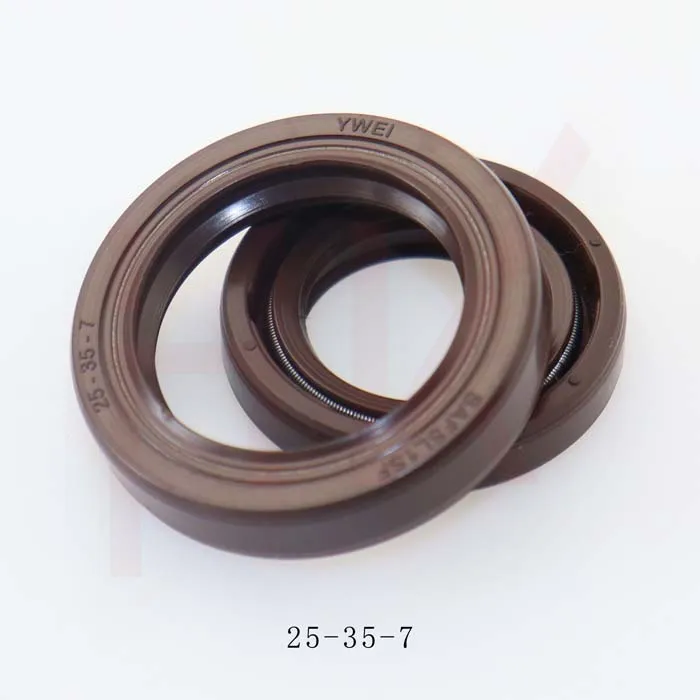Nov . 10, 2024 14:38 Back to list
Understanding the Functionality and Benefits of Swivel Hub Seals in Machinery
Understanding Swivel Hub Seals Importance, Functionality, and Applications
Swivel hub seals are crucial components employed in various mechanical systems, especially in the automotive and industrial machinery sectors. These seals are designed to prevent the leakage of lubricants and fluids while allowing for rotational movement within a hub. Understanding the importance, functionality and applications of swivel hub seals can help in selecting the right seal for any mechanical setup.
What is a Swivel Hub Seal?
A swivel hub seal is a type of rotary seal that is specifically designed for rotating shafts and hubs. It is usually employed in applications where there is a need for a rotating action, but there is also a risk of fluid or lubricant leakage. The seal is located at the point where the shaft connects to the swivel hub, thus allowing for movement while maintaining a tight, leak-proof seal.
Importance of Swivel Hub Seals
The primary function of swivel hub seals is to maintain the integrity of the fluid systems they are a part of. Fluid leakage can lead to several issues, such as
1. Loss of Lubrication Any fluid leakage can result in inadequate lubrication of moving parts, leading to increased friction, wear and tear, and ultimately, premature failure of components.
2. Contamination An effective seal prevents contaminants from entering the lubrication system. Dust, dirt, and other foreign particles can severely affect the performance and lifespan of machinery.
3. Efficiency Maintaining the right fluid levels improves the efficiency of mechanical systems. A seal that functions effectively reduces the risks of air pockets and fluid aeration, allowing machinery to operate smoothly.
4. Safety In some applications, leaking fluids can pose safety risks. Hydraulic fluids, oils, or other hazardous materials can be dangerous if they escape their designated areas, leading to slips, fires, or environmental hazards.
Functionality of Swivel Hub Seals
Swivel hub seals typically consist of several key components a sealing material, a retaining ring, and a spring or elastomechanical element. The design allows the seal to maintain contact with the rotating surface of the shaft or hub while preventing fluid escape.
swivel hub seal

1. Sealing Material The material used in swivel hub seals is critical to their performance. Common materials include elastomers, PTFE, and rubber compounds. The choice of material can depend on the type of fluid being sealed, temperature, and pressure conditions.
2. Retaining Ring This component helps to stabilize the seal in place, ensuring that it does not misalign during operation.
3. Spring Mechanism Some swivel hub seals include springs that apply consistent pressure against the sealing surface. This feature allows the seal to adapt to wear or changes in the diameters of the shaft and hub during operation.
Applications of Swivel Hub Seals
The applications of swivel hub seals are extensive and can be found across various sectors
1. Automotive Many vehicles employ swivel hub seals in their drive systems, particularly in wheel bearings and differential housings. The seals help maintain lubricant levels and prevent contaminants from damaging vital components.
2. Industrial Machinery In production lines and manufacturing equipment, swivel hub seals are integral to rotary actuators, mixers, and conveyor systems. They help manage hydraulic and pneumatic systems where fluid leakage could disrupt processes.
3. Aerospace Aircraft components often use swivel hub seals to ensure safety and performance. The high standards for quality in this sector mean that the seals must be durable and reliable under extreme conditions.
4. Marine Applications In marine environments, swivel hub seals protect equipment from water ingress and ensure that lubricants stay effective, even in harsh conditions.
Conclusion
In summary, swivel hub seals are essential components in various mechanical systems, playing a vital role in preventing leakage, maintaining efficiency, and ensuring safety. Their effective design allows for both rotational movement and a tight seal, making them indispensable in automotive, industrial, aerospace, and marine applications. Understanding their importance and functionality can help professionals select the best sealing solutions for their specific needs, ultimately leading to enhanced performance and longevity of machinery.
-
TCN Oil Seal Metal Ring Reinforcement for Heavy Machinery
NewsJul.25,2025
-
Rotary Lip Seal Spring-Loaded Design for High-Speed Applications
NewsJul.25,2025
-
Hydraulic Cylinder Seals Polyurethane Material for High-Impact Jobs
NewsJul.25,2025
-
High Pressure Oil Seal Polyurethane Coating Wear Resistance
NewsJul.25,2025
-
Dust Proof Seal Double Lip Design for Construction Equipment
NewsJul.25,2025
-
Hub Seal Polyurethane Wear Resistance in Agricultural Vehicles
NewsJul.25,2025
-
The Trans-formative Journey of Wheel Hub Oil Seals
NewsJun.06,2025
Products categories
















